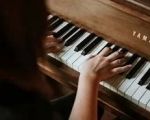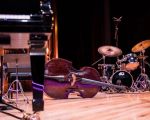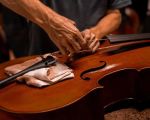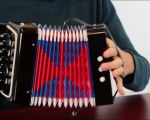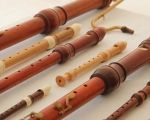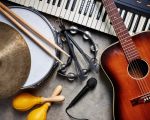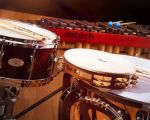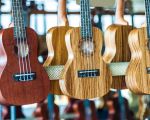Cumbia music, a genre with roots in Colombia, has become one of the most recognizable and beloved styles of Latin American music. Known for its infectious rhythms and lively beats, cumbia has spread far beyond its birthplace, influencing music in countries like Mexico, Argentina, and Peru. But what makes cumbia music so distinctive? The answer lies in the unique set of instruments that form the backbone of its sound. In this article, we’ll explore the various instruments used in cumbia music and how they come together to create its signature rhythm and vibe.
- Understanding Cumbia Music
- Essential Instruments in Cumbia
- Percussion Instruments in Cumbia
- Melodic Instruments in Cumbia
- Modern Takes on Cumbia Instruments
- Conclusion and Cumbia Music Tips
1. Understanding Cumbia Music
Cumbia music, with its infectious rhythms and colorful instrumentation, has a rich history dating back centuries. Originating in the coastal regions of Colombia, it combines indigenous, African, and Spanish influences to form a genre that is both rhythmic and melodic. Traditionally, cumbia music was performed in village celebrations, often accompanied by dancing, and it has evolved into a major force in the Latin music scene. Whether it’s played in a lively festival setting or a more intimate gathering, cumbia always invites movement and joy.
The key to cumbia’s distinctive sound lies in the combination of percussion and melodic instruments. The rhythms in cumbia are often syncopated, and the instruments come together in a way that gives the music a rolling, almost hypnotic feel. The fusion of African rhythms with Spanish melodies creates an engaging mix that keeps audiences swaying and dancing. Now let’s take a closer look at the instruments that make this music come alive.
2. Essential Instruments in Cumbia
Cumbia music relies heavily on a specific set of instruments that drive its rhythm and melody. While the exact lineup of instruments can vary, depending on the region or style, some instruments are considered absolutely essential in creating the signature sound of cumbia. Let’s explore the key instruments found in cumbia music.
Percussion Instruments
The percussion section is the backbone of cumbia music, and it is what gives the genre its unmistakable groove. Key percussion instruments used in cumbia include:
- Maracas: Maracas are perhaps the most recognizable percussion instrument in cumbia. They are used to add a rhythmic shake that complements the beat of the drum. Maracas are typically played in pairs, one in each hand, and are shaken in sync with the other instruments.
- Guacharaca: This traditional Colombian instrument, also known as a "guache," is a type of bamboo scraper. It is used to add texture and rhythmic emphasis, creating a distinct sound that is integral to cumbia’s driving rhythm.
- Conga Drums: Congas, originally from Cuba, have found their place in cumbia bands as well. Played with the hands, these drums add a deeper, more resonant sound to cumbia’s percussion section.
- Bongo Drums: Bongos, like the congas, are hand-played drums that provide a high-pitched, sharp sound. They are often used in cumbia to accentuate the rhythm and add an upbeat element to the music.
Melodic Instruments
In addition to percussion, cumbia music features melodic instruments that provide harmonic depth and help drive the melody. Some of the most common melodic instruments in cumbia music include:
- Accordion: The accordion is one of the most iconic melodic instruments in cumbia. It provides a rich, full sound and plays a central role in cumbia music, particularly in the version known as "cumbia vallenata" (popular in northern Colombia). The accordion’s melodies give cumbia its signature bounce and emotional depth.
- Guitar: While not always the focal point of cumbia music, the guitar serves as an important harmonic instrument. It provides the basic chords and rhythmic strumming that support the melody.
- Saxophone: In some modern cumbia ensembles, the saxophone has become an important addition. It offers a jazzy, smooth texture that complements the rhythmic elements and adds variety to the overall sound.
The interplay between these melodic and percussion instruments creates a unique soundscape that has come to define cumbia music. The combination of the steady, rhythmic foundation of the percussion with the fluid, often soulful melodies from the accordion and other instruments gives cumbia its infectious, danceable groove.
3. Percussion Instruments in Cumbia
The percussion instruments in cumbia music are essential for its rhythmic drive. These instruments provide the foundation for the complex rhythms that define cumbia. Let’s take a closer look at the most important percussion instruments in cumbia music:
Tambora
The tambora is a large drum played with sticks. It has its roots in African rhythms and is one of the oldest percussion instruments in cumbia. Its deep, resonant sound provides a steady pulse that underpins the entire cumbia rhythm.
Cajón
The cajón, a box-shaped percussion instrument, is often used in cumbia bands, particularly in the Andean regions. When played, it creates a sharp, percussive sound that is both rhythmic and textural. The cajón is an essential part of modern cumbia and gives the music a contemporary flair.
4. Melodic Instruments in Cumbia
Melodic instruments in cumbia play a crucial role in adding depth and harmony to the music. While the rhythm section keeps the beat going, the melodic instruments—particularly the accordion—give cumbia its distinctive sound. Here's a closer look at these instruments:
Accordion
The accordion is the heart and soul of traditional cumbia. Its distinctive sound, often paired with the beat of the percussion instruments, creates the signature "bounce" of cumbia music. The accordion’s ability to produce both harmony and melody makes it essential for many cumbia groups, especially in Colombia’s coastal regions. It’s played by pressing buttons or keys to create various pitches and chords, adding both rhythm and melody to the music.
Cuatro
The cuatro is a small, four-stringed instrument that resembles a guitar. It is often used in Colombian cumbia and other traditional Latin music. The cuatro’s bright, plucky sound complements the rhythm section and adds richness to the overall sound of the band.
5. Modern Takes on Cumbia Instruments
While traditional cumbia instruments remain essential to the genre, modern takes on cumbia music have brought new elements into the fold. Today, you might find electric guitars, synthesizers, and even electronic beats used in cumbia performances. These modern influences bring a fresh twist to the traditional cumbia sound, while still honoring its roots. Some artists have incorporated elements of electronic music, creating a hybrid style known as "cumbia electronica," which has gained popularity in recent years.
6. Conclusion and Cumbia Music Tips
Cumbia music’s infectious rhythm and melodic charm are driven by a mix of percussion and melodic instruments. From the signature maracas and guacharaca to the soulful sounds of the accordion, each instrument plays a vital role in creating the signature cumbia vibe. Whether you’re an aspiring musician or simply a fan of Latin music, understanding the instruments used in cumbia can enhance your appreciation for this dynamic genre.
If you’re looking for high-quality instruments to start your own cumbia band or to enhance your sound, visit Beat Trigger for the best musical products and services tailored to your needs.

